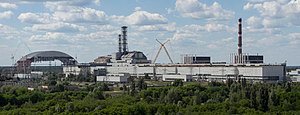Introduction
In the early hours of April 26, 1986, a catastrophic event unfolded at the Chernobyl Nuclear Power Plant in the city of Pripyat, Ukraine. This event, known as the 1986 Chernobyl Nuclear Disaster, is considered the worst nuclear disaster in history. The disaster not only had immediate and devastating consequences but also had far-reaching effects on health, the environment, and the global nuclear industry.
The Chernobyl Nuclear Power Plant
The Chernobyl Nuclear Power Plant, located near the city of Pripyat, was one of the largest nuclear power plants in the Soviet Union. It consisted of four RBMK-1000 reactors, which were graphite-moderated and water-cooled reactors. These reactors were designed to produce electricity and plutonium for military purposes.
The Catastrophe
On the fateful night of April 26, 1986, a safety test was being conducted on Reactor 4 of the Chernobyl Nuclear Power Plant. The test was meant to simulate a power outage and the subsequent shutdown of the reactor’s cooling system. However, a combination of design flaws and operator errors led to a series of events that resulted in a catastrophic explosion.
The explosion ruptured the reactor and caused a massive fire, releasing large quantities of radioactive isotopes into the atmosphere. The radioactive plume spread over a wide area, contaminating the surrounding land, water, and air. The immediate impact of the explosion was devastating, and the effects of the radiation would be felt for years to come.
Immediate Consequences
The immediate consequences of the Chernobyl disaster were severe. Two plant workers died in the explosion, and within hours, firefighters and plant personnel who were involved in the cleanup efforts started experiencing symptoms of radiation sickness. The nearby city of Pripyat was evacuated, and over the following days, more than 300,000 people were relocated from the affected areas.
The release of radioactive materials into the environment had a significant impact on human health. Acute radiation sickness affected many of the emergency responders and plant workers, causing nausea, vomiting, and in severe cases, death. The long-term effects of radiation exposure included an increased risk of cancer, particularly thyroid cancer, as well as other health issues such as cardiovascular and respiratory diseases.
Environmental and Economic Repercussions
The environmental consequences of the Chernobyl disaster were far-reaching. The radioactive contamination affected not only the immediate vicinity but also spread across Europe and beyond. The contamination of soil, water, and vegetation had a detrimental impact on the local ecosystem. Wildlife populations suffered, and some species faced extinction in the affected areas.
The economic repercussions of the disaster were significant. The cleanup and containment efforts required a massive amount of resources and manpower. The Soviet Union, already facing economic challenges, had to divert funds and personnel to deal with the aftermath of the disaster. The long-term costs associated with the Chernobyl disaster, including healthcare expenses and compensation for affected individuals, further strained the country’s economy.
Global Impact
The Chernobyl disaster had a profound impact on nuclear policy and safety worldwide. It exposed the vulnerabilities of the RBMK reactor design and highlighted the importance of stringent safety measures. The disaster prompted a reassessment of nuclear power plant designs and safety protocols, leading to improvements in reactor design and emergency response planning.
The international community also came together to provide assistance and support to the affected regions. Numerous countries and organizations contributed resources and expertise to mitigate the immediate and long-term effects of the disaster. Lessons learned from Chernobyl influenced the development of international nuclear safety standards and cooperation in the event of future nuclear accidents.
Conclusion
The 1986 Chernobyl Nuclear Disaster remains a stark reminder of the devastating consequences that can arise from nuclear accidents. The immediate and long-term effects on human health, the environment, and the economy serve as a cautionary tale for the nuclear industry. The disaster prompted significant changes in nuclear policy and safety practices, ensuring that such a catastrophe is never repeated. As we reflect on the events of April 26, 1986, it is crucial to remember the importance of prioritizing safety and the well-being of both people and the planet in all aspects of nuclear energy.

